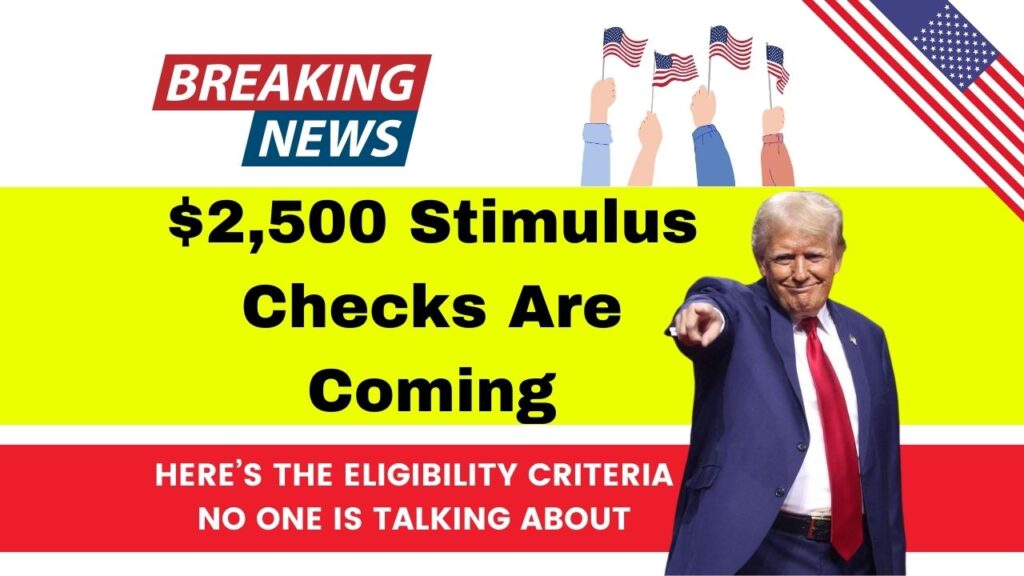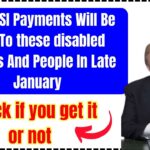
$2,500 Stimulus Checks Are Coming: As of May 2025, headlines are buzzing with talk of a new wave of stimulus checks — some sources even mention figures as high as $2,500. But what’s the truth? Is the government really sending out $2,500 checks, and if so, who qualifies? Let’s clear the air. While no federal $2,500 stimulus check has been officially approved, multiple state-level programs and federal tax credits are indeed putting significant cash into Americans’ pockets. This article provides a detailed breakdown of those programs, their eligibility rules, and how to claim what’s owed to you. Whether you’re a low-income family, a retiree, or just looking to catch up on unclaimed stimulus benefits, this guide will help you understand the current landscape and take action.
$2,500 Stimulus Checks Are Coming
The idea of a single, one-size-fits-all $2,500 stimulus check may be misleading, but the reality is even better for some. Through a patchwork of state rebates, federal credits, and pilot income programs, many Americans stand to receive thousands in direct payments this year. What’s critical is knowing where to look and acting on time. From filing your 2021 taxes to enrolling in state pilot programs, there are real dollars available — but you have to take that first step. With a little diligence, you could receive more than you expected.
| Program | Amount | Eligibility | Deadline |
|---|---|---|---|
| IRS Recovery Rebate Credit | Up to $1,400 | Did not claim the credit on 2021 tax return; AGI below specified thresholds | April 15, 2025 |
| Georgia Surplus Tax Refund | Up to $500 | Filed 2022 & 2023 state tax returns; full-year resident in 2023 and 2024 | May 1, 2025 |
| New York Inflation Refund | Up to $400 | Income under $150,000 (single) or $300,000 (joint); residency requirements | To be announced |
| California Family Support Pilot | $725/month | Low-income families with children under 6 in selected ZIP codes | Ongoing |
| Colorado TABOR Refund | $800 (single), $1,600 (joint) | 2024 state tax filers; residency requirement | March–June 2025 |
IRS Recovery Rebate Credit: Up to $1,400
The IRS estimates that over one million Americans are still eligible for the Recovery Rebate Credit from the 2021 tax year but haven’t claimed it.
Who’s Eligible?
- Individuals who did not claim the credit when filing their 2021 tax return.
- Income limits apply:
- Single: AGI under $75,000
- Married filing jointly: under $150,000
- Head of Household: under $112,500
How to Get It?
If you haven’t filed your 2021 tax return, do it now. You have until April 15, 2025, to claim this credit.
Georgia Surplus Tax Refund: Up to $500
Georgia has approved a one-time tax rebate thanks to its revenue surplus. This payment comes on top of your regular state refund (if any).
Eligibility:
- Full-year resident of Georgia in 2023 and 2024
- Filed state income tax returns for both years
- Amount varies:
- $250 for single filers
- $375 for heads of household
- $500 for joint filers
Deadline to qualify: May 1, 2025
New York Inflation Refund: Up to $400
New York’s proposed $400 “inflation refund” checks are part of a $254 billion state budget designed to offset rising living costs.
Eligibility:
- Income below $150,000 (single) or $300,000 (joint)
- Must meet New York residency criteria
This refund is not yet distributed, but once finalized, millions will benefit. The state is also expanding child tax credits and school meal programs, making this a broader support initiative.
California’s Family Support Pilot: $725/Month
California is providing guaranteed income of $725 per month to selected low-income families in certain ZIP codes.
Key Features:
- Focused on families with children under age 6
- Total of 200 families selected
- Duration: 12 months
Funded by the state’s Department of Social Services, this pilot reflects growing interest in universal basic income-style programs.
Colorado TABOR Refund: Up to $1,600
Thanks to the Taxpayer’s Bill of Rights (TABOR), Colorado will refund billions in surplus tax revenue back to its residents.
Refund Amounts:
- $800 for individual filers
- $1,600 for joint filers
Eligibility:
- Must file your 2024 Colorado state return
- Must meet residency requirements
The state has already started issuing checks in March 2025, with payments continuing into June.
What About the $2,500 Stimulus Checks Are Coming?
Here’s where things get interesting. The buzz about a $2,500 check stems from proposals and state-level cumulative benefits — not a single federal payment.
Examples:
- A family of four in California receiving $725/month could receive over $8,700 in 12 months.
- New York residents could receive multiple benefits (e.g., child tax credits + inflation refund) totaling over $2,500.
- Georgia taxpayers with children could get back $500 in rebates plus state EITC expansions.
So, while there’s no blanket $2,500 check, the total support from multiple programs can exceed that amount for many households.
Tips to Maximize Your Benefit
Here’s how to ensure you don’t miss out:
1. File All Due Tax Returns
Most relief programs require you to have filed recent tax returns. Don’t skip state filings even if you owe nothing.
2. Check State Websites
Each state’s department of revenue or social services site lists the current status of relief programs.
3. Watch Your Income Threshold
Many programs phase out benefits if you earn just above the limit. Explore deductions or retirement contributions to stay eligible.
4. Sign Up for Notifications
Subscribe to your state’s tax agency or the IRS for updates on programs and deadlines.
$1,550 Double Stimulus Payment Coming In May 2025 – Check Eligibility, Payout Dates
TABOR Refund 2025: Get Your $1,600 Stimulus Check – Here’s How!
$1702 Stimulus Checks For these People in 2025: Check Eligibility & Payment Dates
Frequently Asked Questions (FAQs)
Q1. Is there a new federal $2,500 stimulus check?
No. There is no federal legislation approving a one-time $2,500 payment. However, cumulative state benefits can reach or exceed that amount.
Q2. Can I still claim past stimulus payments?
Yes. If you missed the 2021 Recovery Rebate Credit, you can still file until April 15, 2025.
Q3. What if I didn’t file a tax return?
You must file to receive most benefits, even if your income is low or zero. Free filing options are available through the IRS Free File Program.
Q4. Are these programs taxable?
Generally, stimulus and rebate payments are not taxable, but it’s best to confirm with your tax preparer or check IRS guidance.
Q5. Will more states offer payments in 2025?
It’s likely. With many states seeing budget surpluses, more localized relief packages are expected throughout 2025.








